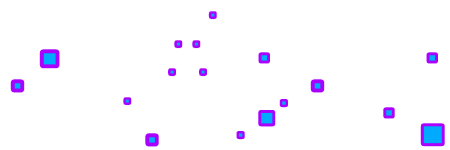WIZARD'S TOE
'A New Magic Unto Chess' By Simon Edward JeppsDownload ~ PDF ↷ ⋱ ⋱ Chatblog ⨗
Introduction
 Whilst it is true that Grandmasters have been saying for a hundred years now that the game of Chess has been "played out" and needs to evolve, the problem Chess faces is actually much, much greater.
Whilst it is true that Grandmasters have been saying for a hundred years now that the game of Chess has been "played out" and needs to evolve, the problem Chess faces is actually much, much greater.
This is because the game of Chess as we have come to embrace and familiarise ourselves with is actually regarded as something "sacred" and therefore somewhat of an untouchable sacrament.
Herewith you can behold its divinity in the fact that regardless of how popular a Chess Variant may have become, even to be featured in major world forums, none such alternative 'evolutions' of the game have ever succeeded the Classical game loved immemorial.
Whilst even I myself have spent decades studying the evolutionary mechanics and practical harmonics of Chess Variants ~ someone I self-title a "Chessician" ~ undertaking a passionately devoted labour of love, resulting in Mageca Chess ~ what I believe to be the only rational evolution of Chess unto a 10x10 board ~ nevertheless even I myself acknowledge how the Classical 8x8 game resonates an undying musical majesty such made only of the divinest orchestra.
No other variation of the game plays this music, it just simply doesn't harmonize in the same way, no matter how much you have worked and studied hard to make it happen.
So the paradox we face is actually moreso how to change Chess without changing Chess.
In my personal humble opinion the problem lies in the Knight's footprint and this is because regardless of how many 'first moves' and subsequent Opening variations there are boasted to exist in the game, in reality not only are only a mere two-handfuls of these actually worthy of playing to good fruition, but unfortunately the Knight itself in fact falls victim to its own footprint ~ in reality, the Knight only has one good first square to reach most of the time and this is K/QB3 ~ or, c3/c6/f3/f6.
That... is even LESS than a Pawn!
By merely granting the Knight one single alternative square to include in its Opening inventory, we would effectively give unto the game yet another infinite realm of Opening possibilities and variations. But the question is, what square? And how? Isn't that... changing Chess?
Well, yes and no. Chess has been changed before, most significantly in 1860 with the official implementation of En Passant and even as recently as 2014 with the official 75-move rule. If it wasn't for this continual evolution we wouldn't have arrived at the popular variation of the game we know today.
So what is Wizard's Toe and how does it change the game?



The Magic Of Change
 A change of sorts to allow variable movement is not actually a forbidden fruit. In fact if you look at the board you will realise not all pieces move the same way all the time as the game is played today.
A change of sorts to allow variable movement is not actually a forbidden fruit. In fact if you look at the board you will realise not all pieces move the same way all the time as the game is played today.
For example, when a Pawn makes its first move it can move two squares forward; or, when a King Castles it performs a dance of several squares with either of the two Rooks; or even when a Pawn advances two squares it may still be captured from its previous square (En Passant)!
The reason a Pawn is given the power to advance two squares on its first move is because the Pawn is otherwise a very slow moving piece. The reason the Knight does not already have a first "special" move is because it is quite a powerful piece in comparison to its lower ranked comrade the Pawn; yet indeed as mentioned, its first move options have nevertheless been overlooked.
So, if we were to grant the Knight a special first move how would we do this? This piece perches itself on the very knife edge of compromise, in that whilst granting it more power in the Opening is only a natural suggestion of the board itself, doing so may in effect become too much of a liberty and upset the balance of the Classical game.
We have to be extremely reserved in our distribution of extra power unto this Classical piece.
Yet perhaps more significantly is, "How then and... why this?" Of course anyone can design a new Chess piece or a new move for an existing piece, but one cannot escape the fact that each and every piece of the Classical game has a rationally provided reasoning to its function and that therefore any new piece or move assigned must likewise conform to a rationally provided reasoning to its new function also.
What pray, thence beckons?
Aye, the outer realm. Immediately when we look at a Knight's 1st move choices we can see that straight off the bat there is one move which serves absolutely zero purpose in 99.99% of games and is instead a completely waisted opportunity to otherwise evolve the Classical game. This move is unto h3/a3/h6/a6.
Wouldn't it just make perfect sense to address this absolutely silly Opening redundancy by granting the Knight a special 1st move about the outer realm? I propose that, not only should the Knight be granted such a FIRST move, but that if we are going to modify this piece it should be done with a THEME of movement applicable throughout the game. I thus hereby propose this 'new Knight theme' to be the Wizard's Toe permission.
Yet the change I am personally proposing doesn't alter the game in any detrimental-unto-classical-thought way or which would then make it a spoiling of the classical game. In fact, far from 'spoiling the classic' Wizard's Toe introduces a most magically inspiring concept unto the game, which whilst quite revolutionary, is nevertheless only just the delicate 'sprinkling of magic' and no more, that the game deserves.
For the Knight will retain and maintain its standard Classical move and so will all the other pieces on the board. What changes is the very function of the Rook~Knight~Bishop trio-formation and thus not only the first Opening choices of a Knight, but the power to summon a whole new philosophy of play around the whole Rook~Knight~Bishop trio-formation at any point in the game.
This formation is what I have named the Wizard's Toe.



The ' Toe '
 My proposal is as follows:
My proposal is as follows:
Whence observing a Knight, we know it usually only has one good first move, "Kt-B3", and that its weakest first move is unto h3/a3/h6/a6, where it serves absolutely zero purpose in 99.99% of games.
Herewith my proposal; Whenever a Rook~Knight~Bishop trio is formed, either horizontally/vertically and either a combo of Black/White pieces, thence the Knight within this formation ~ called the Wizard's Toe ~ MAY LEAP without capturing to the 2nd orthogonal SQUARE away, OR SLIDE without capturing like a colour-bound ROOK, thus only arriving to a square of the same colour. The Knight MAY NOT LEAP further than to the 2nd orthogonal SQUARE away.
This would mean for example, a White Knight can actually play 1. Nb3 or 1. Ng3 in addition to its regular first move options, since the Wizard's Toe formation is already given at the beginning of the game.
Allowing such an ability whenever a certain 'magic combo' is formed about a Knight, allows for the evolution of not only the Knight's initially restricted footprint, but of the entire Classical game in a way that pays tribute to not only its own spiritual history and eccentric culture... But indeed also the eternity of its magical voice.
Looking now unto the Chess Opening, we can see immediately how the player not only has an infinite number of more Opening algorithms to consider, but hey look, how about being able to leap the Knight unto the King or Queen square? Indeed, this could remedy a sometimes even imprisoned Knight!
Perhaps herewith, not only can one now move forward the c/f Pawn a single square without restricting the Knight, but in other adventures maybe the English Opening could be played 1. c4 e5 2. Ng3?! ... likewise preventing 2... e4 and thence perhaps following with #b4, #Nb3... preparing #c5...? The world is your oyster!
I believe the Wizard's Toe enhances the game fantastically and exactly in the way the game should be so, wherefore all Classical standards are preserved yet whilst enhancing the powerful spirit of the Knight's magically renown grace.
One will discover in time how this new 'magic' unto Chess serves a most wondrous palette of gameplay. So please receive this humble idea of mine with an open heart and embrace its presence in the game.
Thank you for reading.
Chatblog ⨗
 |  |





